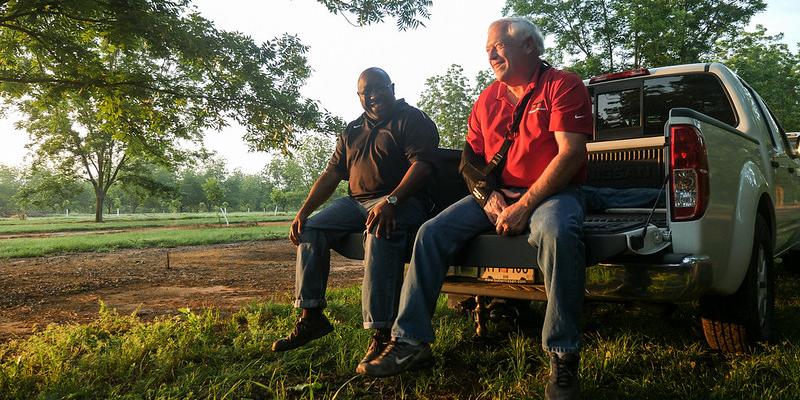Find out how rural and Tribal leaders like you are creating partnerships, or networks, to bring new opportunities and improvements to their communities.
The Rural Partners Network is working on the ground in selected RPN Community Networks to help navigate and access programs from across the federal government and other providers, secure technical assistance, and develop local capacity.
You can follow along as the locally-led RPN Community Networks listed below move forward, building the futures they envision for the places they call home. View the full list of Community Liaison Staff to learn more.
-

In April 2022, Rural Development launched the Rural Partners Network (RPN) to give rural communities access to federal funds and opportunities.
FEATUREDThree Reasons Rural Leaders are Following the Rural Partners Network
A community network is a collaboration among local leaders, residents, civic and business organizations, nonprofits, service providers, development agencies, and others representing the a region’s population. .
Rural stakeholders define the footprint of their community network, which can be a single county – or can include multiple counties and towns in a geographically-distinct rural region.
A community network can come together solely to address a specific need in their community. Or, groups of engaged local leaders and citizens can meet regularly to collaborate on several local priorities.
Whether operating as a partnership or informal collaboration, networks of rural people are what drive local efforts to enhance their economy and improve their quality of life.
The Rural Partners Network provides on-the-ground technical assistance to RPN Community Networks. The community networks are comprised of local leaders and stakeholders collaborating to identify opportunities to address high-priority community needs with additional technical and financial assistance.
The Rural Partners Network hires small, full-time teams of federal Community Liaisons and Planners to work with RPN Community Networks in each RPN-designated state. These place-based employees help their communities build local capacity, identify community-driven solutions, navigate federal programs, connect to a variety of funders and assistance providers, and leverage resources to support locally-led projects.
RPN agencies and other partners also coordinate through the networks and Community Liaisons to support planning, provide technical assistance, and direct program funding for projects and initiatives prioritized by the local community.
RPN identified counties for consideration based on factors such as levels of economic distress, low participation in federal programs, local capacity, and readiness to participate. USDA also conducted community engagement sessions with local community leaders in each county under consideration to identify local interest and opportunities for RPN assistance. Leaders were then invited to define the footprint of their network and identify key partners interested in submitting letters of interest for consideration in RPN.
USDA launches RPN Community Networks in groups (“cohorts”) of 5 – 7 states or territories, with 2 – 3 networks selected in each state. Multiple cohorts are launched each year. USDA will implement RPN in additional states, territories, and Tribal communities as funding is available, with a long-term vision of implementation in every state.
It’s no secret that rural communities sometimes struggle to get financial or technical assistance from highly-competitive federal programs. Through RPN, federal agencies collaborate to improve access to government resources, staffing, and tools.
RPN’s work in selected Community Networks helps federal agencies develop improved service delivery models, program processes, and funding priorities for the benefit of rural communities nationwide.
Participating RPN agencies designate key points of contact – Rural Desk Officers – who coordinate with Community Liaisons working on the ground to help local people access programs and funding. In turn, this direct assistance helps RPN partners develop rural strategies, implement program improvements, and identify rural investment priorities across the country.
Through this new, direct line between rural communities and federal program leaders, we are changing “business-as-usual” by working across agencies to coordinate rural technical assistance, share rural data and measures of success, and align grant requirements.


